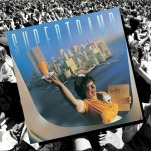Michael Haneke
Michael Haneke has long been one of the arthouse circuit’s premier provocateurs, a cold-blooded Lars von Trier cousin who delights in making audiences squirm. His movies hinge, almost invariably, on acts of violence, often committed out of a sense of curiosity rather than as crimes of passion. The forces that drive the smiling killers of Funny Games or the budding sociopath of Benny’s Video have more to do with Nietzsche than Freud; they torment others not to exorcise inner demons, but as a means of remaking their own image, as refracted through the prism of mass media. Haneke’s latest film, The White Ribbon, is something of a departure, not just because of its classical black-and-white style, but because it’s the first of Haneke’s features to take place before the dawn of television. Set in a small north German village on the eve of the first World War, the film concerns a string of mysterious, apparently unconnected acts of violence that trouble the formerly peaceful hamlet. A surreptitiously strung wire hobbles a doctor’s horse and injures him; a teacher’s mentally impaired son is kidnapped and tortured. As in Haneke’s Caché, the violence seems to be free-floating and self-perpetuating, as if a disembodied malevolence has settled on the town. It’s the closest thing he’s made to a horror movie, or a supernatural thriller in the vein of Village Of The Damned, and it stands a good chance of finally breaking Haneke through to a wider audience in America. While he was in the U.S. for the New York Film Festival in October, Haneke and a translator sat down with The A.V. Club to talk about media fascism, the dangers of religion, and why he isn’t interested in artistic masturbation.
The A.V. Club: What was the first element of the story that fell into place?
Michael Haneke: It was so long ago. I wrote the script 10 years ago, and it had been percolating in my mind for the 10 years previous to that. But the answer—if you want to know the starting point of the film, the original idea I had was the story of a church choir in protestant northern Germany before the first World War. I like the idea of children who had internalized the moral imperatives that they’d been taught by their parents, and then judged their parents according to the moral imperatives that they preached. That was the starting point for the film.
AVC: Is there a reason for the particular region the film is set in? Is it a part of Germany that’s particularly close to Austria?
MH: No. Germany, in terms of religion, at least, is divided in two. The northern part is mainly Protestant, and the southern part is more Catholic, and it’s the southern part that’s closer to Austria and similar in terms of religion. The people in the north that are in this film are Protestant, and I was interested in dealing with Protestantism because of the rigor and strictness and severity of that religion.
AVC: In some ways, the movie focuses on the dangers of religion. One of the children says something like “I told God to strike me down and he didn’t, therefore I must be blameless.” What role do you see religion playing in this story?
MH: It’s a very complex theme. However, I think people would be wrong if they saw my film as a diatribe against religion. The gospels are something beautiful, but the Crusades were less beautiful than that. So we’re really talking about the church and what the church is. I think that religion is an integral part of human needs, but the question also is how you understand religion. I think that we need ideals to live. It’s impossible to consider living without ideals. However, when ideas lead to ideology, that’s a very dangerous thing. Ideology then leads to creating the image of an enemy, and it leads to the murder and massacre that we’ve seen since the beginning of time. If you think of how much blood has been shed by man against man over the course of human history, then probably religion is the greatest culprit of all of them—whichever religion at all you’re talking about. The difficulty, then, is when you create a church, an institution, and you create a dogma. When you create an ideology, that’s the danger. Communism, too, is a beautiful idea, but millions of people died when communism became an ideology.
AVC: The film is framed by a narrator who, based on the sound of his voice, is looking back from many years after the fact. What was useful to you about putting that frame around the story?
MH: For me, it’s always difficult when a historical film claims to depict or represent a reality that none of us can know, that is always different. It’s always the case. We never know what happened then. So my approach with the narrator is to question that, to leave that open, to underline the fact that this is uncertain. In general, in all my films, I choose to create a certain mistrust, rather than claiming that what I’m showing onscreen is an accurate reproduction of reality. I want people to question what they are seeing onscreen. In the same way as I used the narrator, I also used black and white, because it creates a distance toward what’s being seen. I see the film as an artifact rather than a reliable reconstruction of a reality that we cannot know.










![Rob Reiner's son booked for murder amid homicide investigation [Updated]](https://img.pastemagazine.com/wp-content/avuploads/2025/12/15131025/MixCollage-15-Dec-2025-01-10-PM-9121.jpg)

























![HBO teases new Euphoria, Larry David, and much more in 2026 sizzle reel [Updated]](https://img.pastemagazine.com/wp-content/avuploads/2025/12/12100344/MixCollage-12-Dec-2025-09-56-AM-9137.jpg)



